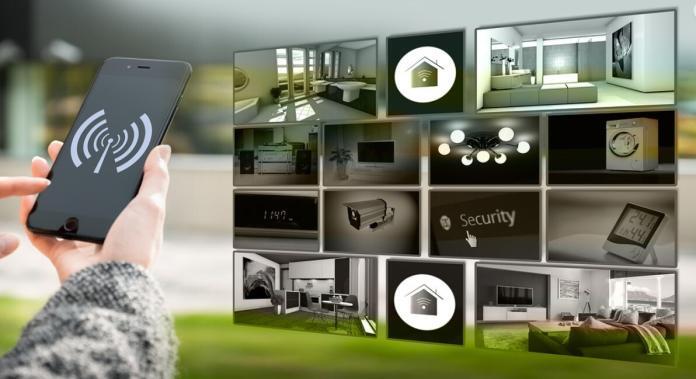America hosts various campuses from multiple highly recommended universities. Those considering spending their undergraduate or graduate years in one of these institutions aren’t only interested in academic programs and quality of teaching but also in how safe their experience will be.
Advancements in technology have allowed colleges and universities to boost their level of on-campus housing security. Let’s have a look at this topic in greater detail.
Smart access control systems
Smart access control systems have transformed security in on-campus housing. They are a crucial component of any comprehensive approach aimed at reducing potential security threats. These systems utilize cutting-edge technologies such as biometrics, smart cards, and facial recognition to grant entry only to authorized individuals in dormitories, residence halls, and other housing facilities.
A crucial benefit of smart access control systems is their capacity to observe and record access. This adds an essential layer of security, as it allows administrators to actively supervise those who enter and leave the facility. Furthermore, the system identifies entry patterns and alerts officials to unusual activities, facilitating the detection of possible security breaches and enabling swift responses.
Smart access control systems also enable real-time access management, giving campus administrators increased flexibility. Authorized users can instantly allow or deny access, ensuring that only approved individuals can enter specific areas within a certain timeframe. Moreover, administrators can employ intelligent access control systems to oversee occupancy and allocate security staff as needed.
Advanced video security
Modern video security technology is another crucial vital element in on-campus housing security. These employ various camera types, such as fixed, PTZ (pan-tilt-zoom), and fisheye security cameras, and fixed cameras, ensuring comprehensive coverage of residential zones and shared spaces.
The advantages of implementing cutting-edge video monitoring are numerous. With cameras recording activity continuously, they generate a visual archive that can be employed to examine incidents and pinpoint suspects. Fisheye cameras, which deliver a 360-degree perspective of an area, are especially effective in overseeing expansive common spaces like lounges and dining halls. Conversely, PTZ cameras can be aimed at specific locations for more focused observation.
A notable benefit of sophisticated video surveillance is the capacity to assess footage using artificial intelligence. This technology can detect patterns, recognize irregularities, and automatically highlight potential security events. When used in conjunction with smart access control systems, this offers a robust resource for campus security staff to proactively supervise and address potential hazards.
Visitor management systems
A visitor management system can also play an important role in enhancing on-campus housing security. This system ensures entry is granted only to authorized personnel and guests, thereby bolstering overall safety.
A visitor management system may incorporate a registration component, necessitating visitors to present identification and relevant information before being granted access to the campus.
This data can be utilized to establish a visitor log, thus improving accountability and traceability. Additionally, the system can authenticate visitor credentials, barring unauthorized individuals from entering the premises.
Moreover, this system may feature real-time monitoring and notification capabilities, which allow it to inform officials of possible security risks. Administrators can monitor visitor movements and document their time on campus, aiding in investigations and observing individual behavior over time.
In summary, incorporating a visitor management system can considerably boost on-campus housing security. This technology fosters accountability and traceability while restricting unauthorized access to the campus. Ultimately, this helps the creation of a safer and more secure atmosphere for students, staff, and guests.
Emergency call stations
Emergency call stations are a crucial element in on-campus housing security, as they offer a direct communication link to campus security staff during emergencies. These stations are usually strategically distributed across the campus to ensure comprehensive coverage in all residential zones and shared spaces.
There are numerous benefits when installing emergency call stations on campus. Primarily, they enable instant contact with security personnel in emergencies such as fires, natural disasters, or violent incidents. This can considerably decrease response times and improve the likelihood of a favorable outcome.
Moreover, emergency call stations can be customized to provide assistance relevant to the specific emergency at hand. For instance, during a fire, the station might automatically play a pre-recorded message detailing safe evacuation procedures. In the event of a violent incident, the station could permit callers to communicate directly with security staff and share vital information about the situation.
Additionally, emergency call stations can act as a deterrent for potential criminals by serving as a visible indication that security personnel are on standby to handle any incidents that may arise.
Smart lighting
Smart lighting is another technology that can greatly enhance on-campus housing security. A smart lighting system employs smart sensors and automation to adjust illumination levels based on factors like occupancy, time of day, and ambient light conditions. This technology bolsters security by improving visibility and minimizing shadowed areas, facilitating easier monitoring of activity in residential zones and shared spaces.
A notable benefit of intelligent lighting is its ability to deter potential wrongdoers. By utilizing motion sensors and automated lighting, the system can create the illusion of an occupied area even when it is vacant. This can effectively dissuade criminals from targeting such locations.
Furthermore, intelligent lighting can promote a safer environment for students and staff by minimizing the risk of accidents in areas with less light, such as staircases and parking lots. This technology can also be integrated with other on-campus security systems like innovative access control and cutting-edge video surveillance. By lowering light intensity in areas where cameras are installed, intelligent lighting can enhance image clarity and offer better visibility for security staff.
Final Thoughts
Technological advancements have dramatically transformed on-campus housing security. Modern technologies such as innovative access control systems, advanced video monitoring, visitor management systems, emergency call stations, and smart lighting contribute to a secure environment for students and staff.
By leveraging these tools collectively, institutions can attain extensive security coverage and considerably mitigate the hazards associated with potential threats.
You may also want to read,








